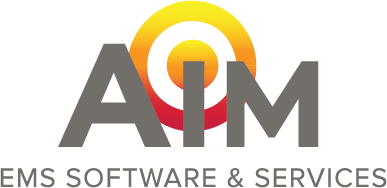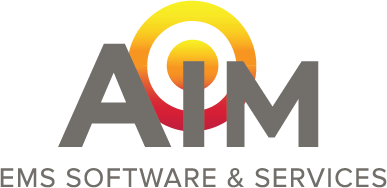![]()
Creating a clinically solid, medically sound, and billing-compliant EMS patient care record is critical not just to patient health, but EMS operational health as well. How is your EMS operations measuring up? How do you use key metrics to improve your EMS data entry and documentation?
A complete and detailed EMS patient care record starts with entering valid EMS data from the point of dispatch. Once the crew completes the patient interaction and care, the process continues with the patient care report (PCR). A patient care report, whether hand-written or entered in ePCR software, serves as an evaluation system of EMS data. The PCR should list the patient’s demographics, location of treatment, symptoms, pertinent negatives (significant symptoms the patient does not exhibit), complete medical history, provided treatments, unprovided standard treatment (and why), and the patient’s billing information.
Just as no one learns the proper way to apply a backboard and cervical collar overnight, no one learns quality EMS data entry and documentation skills without practice. EMS data entry and documentation skills need to be taught and then refined. To improve EMS data entry, organizations should utilize a documented Quality Assurance Program. Each ePCR, or paper EMS patient care record, should go through a QA review process. In a large EMS system, it may not be possible to track the quality of all the patient care records. In this case, one should review a statistically significant sample size of EMS patient care records.
The Process of Tracking, Measuring and Improving EMS Data Entry and Documentation
Initially, peer reviews and various escalating levels of review ensure that proper medical treatment, as outlined in the documentation, was provided to the patient. The review period includes an overview of the treatment in adherence to the agency's specific treatment protocols and policies if they differ from local protocol.
Later, the EMS data entry and documentation undergoes another review process to ensure quality and completeness according to the NEMSIS (National Emergency Medical Services Information System) minimum EMS data set requirements. Not all states and territories of the United States submit this EMS data. Refer to the current map of which states report their EMS data to the NEMSIS EMS database.
A good EMS data entry and documentation ePCR software should have the ability to verify the validity of your EMS data automatically, i.e. checking mandatory fields based on call type or comparing a frequent flyer address or insurance information against that of a previous EMS transport.
Finally, the ePCR documentation goes through another review, from a billing standpoint. This review ensures the EMS data paints a complete and accurate picture of patient care and meets Center for Medicare and Medicaid Services (CMS) compliance guidelines for reimbursement.
Software specifically for EMS data entry and documentation can help with the process. At some agencies, EMS quality assurance specialists scan PCRs for errors and contradictions in statements/narratives. The EMS data entry and documentation billing review process not only looks to maintain proper reimbursement, but also checks to make sure that charges are not overstated. It also assures that the request for EMS reimbursement follows the ICD-10 billing standards.
Avoiding Revenue Cycle Dips and Delays Due to EMS Data Entry Errors
The main and most potent motivation behind tracking and measuring EMS data entry and documentation is avoidance of payment delays. Payment delays ultimately lead to dips in the revenue stream that heavily stress the agency's collections and cash flow. Therefore, one should proactively practice all of the above-mentioned QA review steps as part of an automated workflow that starts with Dispatch, continues with ePCR, and carriers all the way through to Billing software applications. By improving EMS data entry and documentation through tracking and measuring, payment delays become largely avoidable.
Proactive EMS Data Entry and Documentation Review Processes
For best results, view the EMS data entry and documentation review process as a learning and teaching experience, not a punitive process. The EMS data entry and documentation review process has three key steps:
- Track EMS data for accuracy and completeness on a consistent basis at each stage of collection: dispatch, ePCR creation, Quality Assurance review, and claim creation.
- Measure individual and overall agency performance through defined, documented reviews of EMS data entry and documentation. A quality EMS workflow system will provide the tools to help measure results.
- Improve EMS data entry and documentation results by identifying issues and trends and allowing for feedback and training to those involved. by doing this consistently, the system will constantly improve and become increasingly more efficient. As a result, expect a decrease in the amount of delayed and/or rejected claims.
Ultimately, every EMS agency aims to to reward those who perform excellent patient care documentation and completes EMS data entry in a timely manner. Implementing a workflow process that tracks, measures, and improves EMS data entry and documentation is a best practice.
AIM Online EMS Software and Services wants to hear about your personal challenges with efficient EMS data entry and documentation. Give us a call at 1-800-726-4690.




